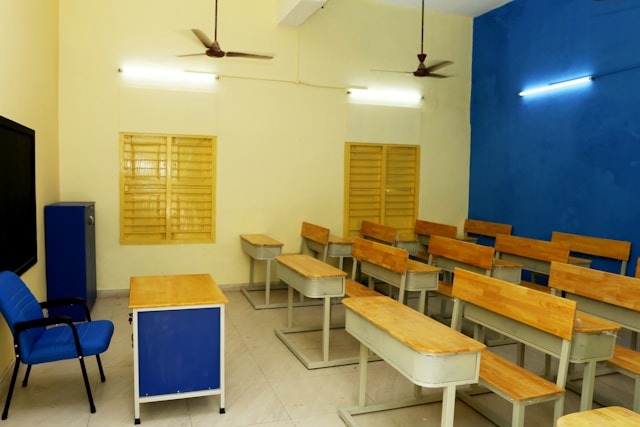Importance of Clean Learning Environments
In Nigeria, where the education sector is often challenged by inadequate infrastructure and poor maintenance, the importance of a clean learning environment cannot be overstated. A hygienic and well-organized school environment is not just about aesthetics; it significantly impacts student performance, attendance, physical health, and even emotional well-being.
1. Promotes Better Concentration and Academic Performance
Clean classrooms are more conducive to learning. A clutter-free environment reduces distractions and helps students concentrate better. When desks, floors, and toilets are clean, students are more likely to feel comfortable and motivated, improving their academic outcomes. Studies have shown that schools with effective cleaning routines report higher test scores and student engagement.
2. Protects Student and Teacher Health
Unclean learning environments expose students and teachers to harmful germs, bacteria, and viruses. This can lead to frequent outbreaks of illnesses like flu, diarrhea, skin infections, and respiratory conditions, especially in densely populated schools. When students fall sick often, they miss classes and fall behind in their studies. Clean facilities reduce absenteeism, promoting consistent attendance and healthier learning experiences.
3. Builds Respect and Discipline
When students are taught in clean and orderly environments, they are more likely to develop a sense of responsibility, respect for property, and discipline. A tidy space subconsciously encourages students to maintain cleanliness and follow rules, creating a culture of mutual respect and orderliness.
4. Encourages Regular Attendance
Many students dread going to school because of filthy toilets, foul-smelling classrooms, or overflowing dustbins. Such environments demotivate learners and can contribute to dropout rates. A clean school, on the other hand, is inviting and encourages regular attendance. This is especially important for girls who may avoid school due to unhygienic restrooms during menstruation.
5. Supports Teachers’ Productivity
Teachers also benefit from clean and organized environments. A well-maintained staffroom or office reduces stress and promotes a more productive teaching experience. When the environment is neat and health-friendly, educators are more enthusiastic, resulting in improved lesson delivery and student outcomes.
6. Minimizes Spread of Contagious Diseases
Cleanliness reduces the likelihood of disease outbreaks in schools. In many Nigerian communities, children bring infections from unsanitary schools to their homes, spreading illnesses among families. Regular cleaning of surfaces, toilets, and shared materials minimizes such risks.
7. Boosts Mental and Emotional Well-being
A clean school is not only physically healthy but also emotionally comforting. Just like adults, students thrive in environments that are orderly and calm. Clean surroundings can ease anxiety, reduce behavioral problems, and enhance focus, especially for children with attention challenges.
8. Enhances the School’s Public Image
Schools with clean learning environments earn trust from parents, communities, and education stakeholders. It reflects seriousness and commitment to quality education. For private institutions, this can attract more enrollments and support.
9. Encourages Environmental Responsibility
Teaching students to clean up after themselves and maintain their classrooms instills environmental values. This helps raise responsible citizens who value cleanliness and sustainability in the larger society.
10. Essential for Pandemic Preparedness
The COVID-19 pandemic highlighted how crucial hygiene is in educational institutions. Going forward, schools must integrate regular handwashing, surface sanitation, and waste management into their routines to prevent future outbreaks.
How Schools Can Maintain Clean Learning Environments
- Implement daily cleaning schedules for toilets, floors, and classrooms.
- Provide adequate waste bins and regular waste disposal systems.
- Educate students on personal hygiene and environmental sanitation.
- Ensure proper water supply for drinking and washing.
- Involve parents and community in school maintenance efforts.
To understand more about how school hygiene affects health, read our previous post on How Poor Sanitation is Affecting Students’ Health in Nigerian Schools.
Also, check out the UNICEF Nigeria Education page for programs supporting safe learning environments across the country.
Conclusion
Clean learning environments are not a luxury—they are a necessity. For Nigerian schools aiming to provide quality education, improve performance, and safeguard health, prioritizing cleanliness is one of the most effective steps. It’s time for school administrators, teachers, parents, and governments to act collectively and ensure every child learns in a clean, healthy space.

